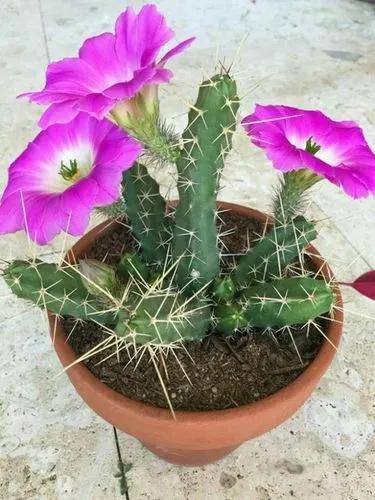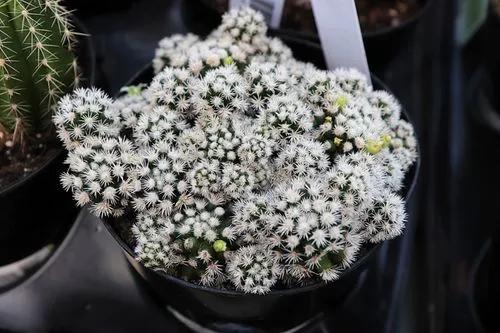Spectacular columnar stems and spiraling shape — Cereus forbesii spiralis is like an Ancient Greek temple in the world of cacti.
Spiraled Cereus Care
Cereus forbesii spiralis



Spiraled Cereus (Cereus forbesii spiralis), also known as Contorted Cereus and Twisted Cereus, originated in Brazil, and its seeds were brought to Europe in the 1980s. Since then, it has been known for its column-like look, white flowers, and red fruits and sold worldwide. It can reach up to 16.5 feet (5 m) in height and 5 inches (12.5 cm) in diameter.
How to Care for the Plant

Water

Cereus forbesii spiralis is absolutely drought-tolerant, so there is a high risk of overwatering if you do not allow the soil to dry out fully between the watering sessions.

Pruning

No pruning is needed for these stunning cacti.

Fertilizer

Spiraled Cereus plants are not dependent on fertilizers but will enjoy a nutrient boost in spring and summer. Use a special cacti & succulent fertilizer once a month during the growing season.

Sunlight

Full sun is best for Cereus once it is more than 1 year old. Younger plants should be protected from harsh sunlight and put in place with afternoon shade. On hot summer days, make sure to protect your plant with a shade cloth.

Soil

Free-draining cactus soil is the best option for this plant. Ideally, it should be low in peat. You can also mix your own soil by combining equal parts of loam, perlite, and sharp horticultural sand.

Propagation

Spiraled Cereus can be propagated via division, sowing, and cuttings. Make sure to allow the cuttings to callus over for at least a week before planting them in well-draining soil.

Temperature

This Columnar Cactus thrives in the temperature range of 50°F to 80°F (10-27°C).

Container

A perfect container for these cacti should have drainage holes and a pot saucer. These plants prefer to be slightly rootbound, but make sure to repot them into a pot that is a size larger every two years. It is better to repot in spring or summer.

Fun fact

Contorted Cereus is a heavy bloomer, but unfortunately, its large flowers blossom only at night and last for 24 hours, so you’d better not miss them!

Popularity

797 people already have this plant 91 people have added this plant to their wishlists
Discover more plants with the list below
Popular articles






